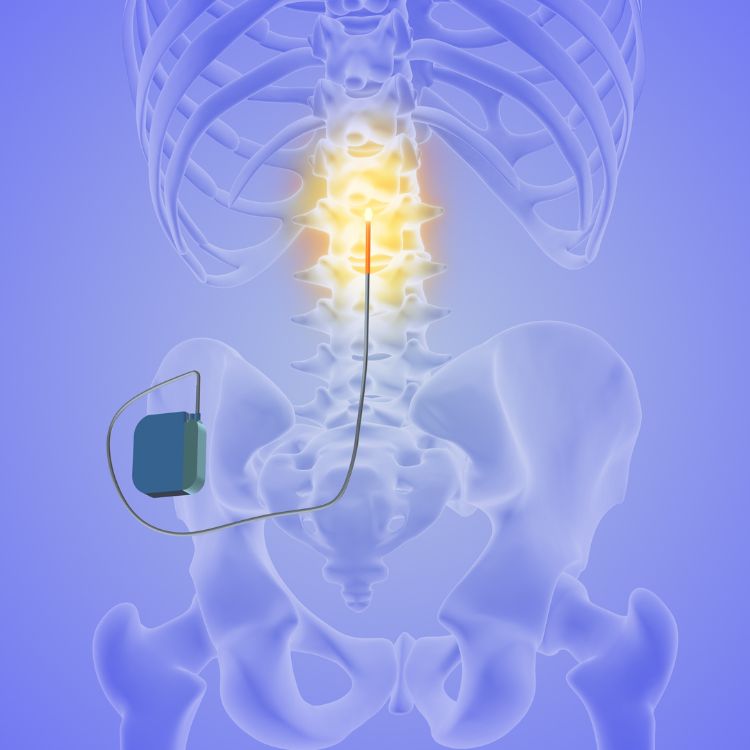Complex Regional Pain Syndrome (CRPS, formerly RSD)
Who should get a spinal cord stimulator?
Pain physicians generally recommend this procedure only after several other conservative treatments have not been successful in relieving your pain. In some cases, you may need to try, and fail, another type of treatment before qualifying for a spinal cord stimulator trial.
Spinal cord stimulation is not for everyone with chronic pain, as it is not intended to treat somatic pain. Somatic pain is pain generated from a non-nerve source such as a muscle or bone.
Spinal Cord Stimulator Trial
The process of spinal cord stimulation begins with a trial. A trial involves placing two small leads into the epidural space. These leads are connected to an external battery which you wear for the duration of the trial. The lead placement is similar in approach and invasiveness of a standard “nerve block”.
The trial period lasts anywhere from 5-7 days depending on a patient’s relief pattern. During the trial, a spinal cord stimulation representative will closely monitor your response in conjunction with your physician to help you in determining whether the trial was successful. At trial completion, the leads are simply removed in the office. After a successful trial, a patient will be referred for permanent implantation.
What to Expect During the SCS Implant Procedure
Spinal cord implantation is quite similar to the trial, except the leads and battery are placed under the skin. This is a minimally invasive surgery that is done as an outpatient (no requirement to stay overnight in a hospital). The implantation usually takes approximately 2 hours to complete.
On the day of your procedure, our team will walk you through the process and answer your questions. After sterilizing the treatment area, a local anesthetic and optional sedation are administered.
Using live imaging, your doctor carefully guides the leads into place and connects them to an external generator. If you feel discomfort during the procedure, let us know so we can adjust accordingly. The trial procedure typically takes less than an hour.
You’ll rest briefly in recovery before heading home with post-care instructions and a follow-up appointment.
Spinal Cord Stimulator Recovery & Long-Term Benefits for Pain Relief
Some soreness is normal after the procedure. Keep the area clean and dry, and call our clinic if you notice redness, swelling, or unusual pain.
Following permanent SCS implantation, a patient should restrict themselves from excessive bending, twisting, or overhead activity for approximately 8 weeks. They should also not lift objects greater than 10 pounds during that time. These restrictions are aimed at minimizing the risk of lead migration while the tissue around the leads and lead anchors heal. After these 8 weeks, the patient can resume normal physical activity as tolerated.
Many patients feel relief during the trial. If successful, a permanent stimulator is implanted in a follow-up procedure. SCS has helped countless patients reduce their need for pain medication, improve mobility, and regain independence.


